After a foot or ankle fracture, proper care is crucial for a smooth recovery. Do follow your doctor’s instructions, including resting and elevating your foot to reduce swelling. Keep weight off the injured area as advised and use crutches, a walker, or a boot if recommended. Maintain good hygiene around any casts or braces, and attend all follow-up appointments to monitor healing progress. Eating a nutrient-rich diet with plenty of calcium and vitamin D can also help strengthen bones.
Avoid putting pressure on your foot too soon, as this can delay healing or cause further injury. Don’t ignore pain or swelling—these can be signs of complications that need medical attention. Refrain from removing or adjusting any medical devices without consulting your doctor, and avoid high-impact activities until fully cleared. Additionally, don’t skip rehabilitation exercises, as they help restore mobility and strength. Following these dos and don’ts will help ensure a safe and steady recovery.
Trust your Doctors Plan and Follow All Recommendations
Trusting your doctor’s plan is essential for a smooth recovery from foot and ankle injuries. At Austin Foot and Ankle Center, following all recommendations—from rest and rehabilitation to medication and lifestyle adjustments—ensures optimal healing and prevents complications. Their expert team provides personalized treatment plans tailored to your specific needs, helping you regain mobility safely. By adhering to their guidance, you can reduce pain, speed up recovery, and get back to your daily activities with confidence. Your health and well-being are their priority every step of the way.
Do Not Miss Physical Therapy
Don’t Rush the Recovery Process after a Foot Fracture
Recovering from a foot fracture takes time, and rushing the process can lead to setbacks or complications. Even if the pain subsides, the bone and surrounding tissues need sufficient time to heal fully. Pushing too hard too soon can result in reinjury, prolonged discomfort, or even chronic issues that affect mobility in the long run.
Following your doctor’s guidelines, attending follow-up appointments, and gradually reintroducing activities are key to a successful recovery. Prioritizing rest and rehabilitation ensures a stronger, healthier return to normal movement without unnecessary risks.
FAQ: Foot & Ankle Fracture Recovery
Recovering from a foot or ankle fracture can be challenging, and you may have questions about situations that weren’t covered in the original post. This FAQ addresses common concerns and real-life scenarios to help ensure a smooth and safe healing process.
How can I tell if my fracture is healing properly?
Signs of proper healing include:
- Decreased pain and swelling over time
- Improved mobility and strength
- No new bruising or redness
- X-rays confirming bone regrowth
If you notice persistent pain, swelling, or unusual sensations, contact your doctor to ensure there are no complications such as improper healing or infection.
What if my cast or boot feels too tight?
A tight cast or boot can reduce circulation, causing numbness, tingling, or increased swelling. If this happens:
- Elevate your foot to reduce swelling
- Loosen any adjustable straps on the boot
- If wearing a cast, contact your doctor immediately for an evaluation
Do not attempt to remove or adjust a cast on your own, as this can lead to improper healing.
Can I take my boot off to sleep?
Your doctor will provide specific instructions, but in most cases:
- A cast must stay on at all times
- A walking boot may be removed at night if approved by your doctor
If you have been advised to wear the boot while sleeping, keep it on to avoid accidental movement or re-injury.
What if I accidentally put weight on my foot too soon?
If you step on your injured foot by mistake, assess for:
- Increased pain or swelling
- Bruising or a new sharp pain
- Feeling of instability in the foot or ankle
A brief misstep may not cause serious harm, but repeated weight-bearing too soon can delay healing. If symptoms worsen, consult your doctor for an evaluation.
How do I prevent stiffness while recovering?
Stiffness is common after a period of immobilization. To prevent it:
- Perform doctor-approved gentle range-of-motion exercises
- Keep the rest of your leg and hip mobile with safe exercises
- Massage the surrounding muscles to encourage circulation
Avoid forcing movement if pain increases, and always follow your doctor’s instructions on when to begin mobility exercises.
How can I reduce swelling that isn’t improving?
Swelling can persist for weeks after a fracture. If it is not improving:
- Elevate your foot above heart level as often as possible
- Continue using ice therapy as directed
- Wear a compression sock if recommended by your doctor
If swelling worsens or is accompanied by redness, warmth, or pain, seek medical attention, as this could indicate an infection or blood clot.
Can I exercise while recovering from a foot fracture?
High-impact exercises should be avoided, but safe movement is important for circulation and overall health. Options may include:
- Seated upper body exercises
- Non-weight-bearing leg exercises
- Swimming or water therapy once cleared by your doctor
Always confirm with your doctor or physical therapist before starting any new activity.
How do I shower safely with a cast or boot?
To prevent slipping and keep your injury dry:
- Use a waterproof cast cover or seal the cast with plastic wrap and tape
- Sit on a shower chair to avoid standing on one foot
- Use a non-slip bath mat for added stability
If wearing a boot, ask your doctor whether you should remove it before showering.
What should I do if my other foot, knee, or hip starts hurting?
Pain in the uninjured leg, knee, or hip can occur from:
- Overcompensating while walking with crutches or a boot
- Shifting weight to one side for extended periods
- Muscle imbalances from lack of movement
To minimize discomfort:
- Wear a well-cushioned shoe on the uninjured foot
- Use mobility aids correctly to avoid straining other areas
- Stretch and strengthen supporting muscles once cleared by your doctor
Persistent pain in other joints may require physical therapy to correct movement patterns.
Can I travel with a foot or ankle fracture?
Travel is possible, but precautions should be taken:
- If flying, inform the airline in advance about mobility needs
- Keep your foot elevated during long car or plane rides
- Move your toes and ankle (if allowed) to encourage circulation
- Request wheelchair assistance at airports if needed
Speak with your doctor before traveling, as prolonged sitting can increase the risk of blood clots.
What happens if I miss a physical therapy session?
Missing one session may not be critical, but consistent therapy is essential for regaining strength and mobility. If you miss an appointment:
- Perform home exercises as instructed by your therapist
- Reschedule as soon as possible to avoid delays in progress
Skipping multiple sessions can lead to stiffness, weakness, and longer recovery time.
Can I return to work while recovering?
Your ability to work depends on:
- Your job requirements (desk job vs. physically demanding work)
- Your doctor’s approval for weight-bearing activity
- Your ability to use crutches or a mobility aid safely
For desk jobs, modifications like elevating your foot and taking breaks to move may be enough. For active jobs, a longer recovery period may be necessary.
What are the signs that my fracture is not healing correctly?
Delayed healing or complications can show up as:
- Persistent or worsening pain after several weeks
- Swelling that does not improve with rest and elevation
- A new deformity or instability in the foot or ankle
- Pain returning after starting weight-bearing activities
If you experience any of these symptoms, schedule a follow-up appointment immediately.
How do I prevent another foot or ankle fracture?
Once you’ve healed, it’s important to reduce the risk of re-injury:
- Strengthen your ankle with balance and stability exercises
- Wear supportive shoes with proper arch and heel support
- Avoid walking barefoot on hard or uneven surfaces
- Maintain good bone health with calcium and vitamin D
When should I schedule my next follow-up appointment?
Follow-up visits are essential to monitor healing progress. Your doctor will usually schedule:
- An initial follow-up within the first 1-2 weeks after injury
- Additional X-rays around 4-6 weeks to check bone healing
- Physical therapy clearance before returning to full activity
If you experience increased pain, swelling, or mobility issues at any point, do not wait for your next appointment—contact your doctor immediately.
Need Expert Foot & Ankle Care? Contact Austin Foot and Ankle Center
Recovering from a foot or ankle fracture requires patience and proper care. If you have lingering pain, difficulty walking, or concerns about your recovery, the specialists at Austin Foot and Ankle Center are here to help.
Schedule an appointment today for expert evaluation and personalized care. Taking the right steps now will ensure a smooth recovery and long-term foot health.
Take the Right Steps Toward a Safe and Strong Recovery
At Austin Foot and Ankle Center, we know that recovering from a foot or ankle fracture can feel overwhelming. But with the right care, patience, and expert guidance, you can regain mobility and prevent long-term complications.
Our team is dedicated to providing personalized treatment plans to help you heal safely. Whether it’s pain management, physical therapy, mobility support, or post-injury rehabilitation, we’re here to ensure that every step of your recovery is as smooth as possible.
💙 Don’t let foot pain slow you down. If you’re experiencing discomfort, swelling, or difficulty walking, it’s time to get professional care. Ignoring symptoms can delay healing and lead to further complications—let’s address them together.
📅 Schedule an appointment today with the specialists at Austin Foot and Ankle Center and take control of your recovery. Call us at (512) 450-0101 to book your consultation and get the expert care your feet deserve!
📍 Your mobility is our priority—let us help you get back on your feet, stronger than ever.



